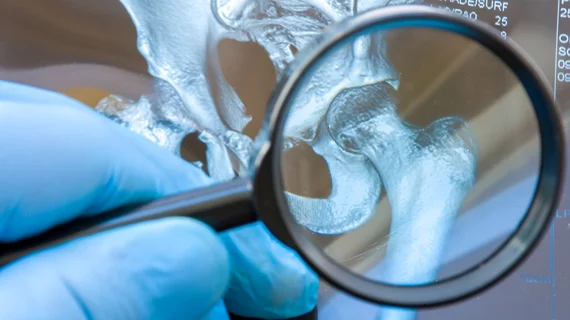Point-of-care ultrasound cuts costs and visit times for patients with developmental hip dysplasia
Point-of-care ultrasound can cut both costs and visit times for infants with developmental dysplasia of the hip, according to a new investigation.
Typically, orthopedists or other providers refer such patients to the radiology department for “traditional” sonographic evaluation. However, having the treating provider perform POCUS for both detection and follow up of this concern may offer considerable value, experts wrote in the Indian Journal of Orthopedics.
Analyzing 532 encounters—including 326 with point-of-care ultrasound and 206 using traditional sonography—researchers found statistically significant differences. Average patient POCUS encounter was about 42 minutes compared to 92 minutes for formal ultrasound, while average cost landed at $121 compared to $339.
“POCUS has dramatically expanded the possibilities of screening in both hospital and outpatient settings and streamlined the process of diagnosing patients,” Christina Herrero, MD, an orthopedic surgery resident at NYU Langone Health, and colleagues wrote Oct. 19. “Though this ultrasound exam is different from that for DDH, the capability of the treating physician to perform it in the office versus sending the patient to a radiology suite for a formal US is relevant and can save time. Often clinicians are unaware of the lowering cost and efficiency of incorporating POCUS into their practices.”
For the study, Herrero et al. retrospectively analyzed visits to an outpatient office at a single-specialty pediatric orthopedic hospital logged over a two-year period. They tapped the electronic medical record to determine the duration of visits and care costs. POCUS exams were performed by a single surgeon, while three others delivered the formal imaging investigations. All subjects were on private pay, with no Medicaid recipients included in the sample.
Patients in the study were under 10 months old, presenting to the ortho practice for hip evaluation. The study sample included 140 new visits (80 imaged via POCUS) and 392 follow-up evaluations (246 POCUS). Portable ultrasound was available at “all times” at the clinic, connected to a smartphone or table and taking about five minutes for prep, positioning, examination and saving pictures. Meanwhile, formal US patients were clinically evaluated, scheduled an exam and were sent to the radiology suite and then returned for the clinician to interpret results. Order of events varied depending on the encounter, and the EMR lacked detailed records of these steps, the authors noted.
Herrero and colleagues believe this is one of the first studies to evaluate POCUS costs in developmental hip dysplasia evaluation and hope others will explore making this practice change.
“Most physicians also rely on the radiology interpretation of the study, which brings in more significant variability as the quality is not always uniform,” the authors advised. “POCUS allows the streamlining of all of these steps into one office visit for evaluation, diagnosis and treatment. When time is of the essence, as it is for the diagnosis and treatment of DDH, advancements that improve efficiency and reduce cost, such as POCUS, should be distributed widely for incorporation into practice.”

